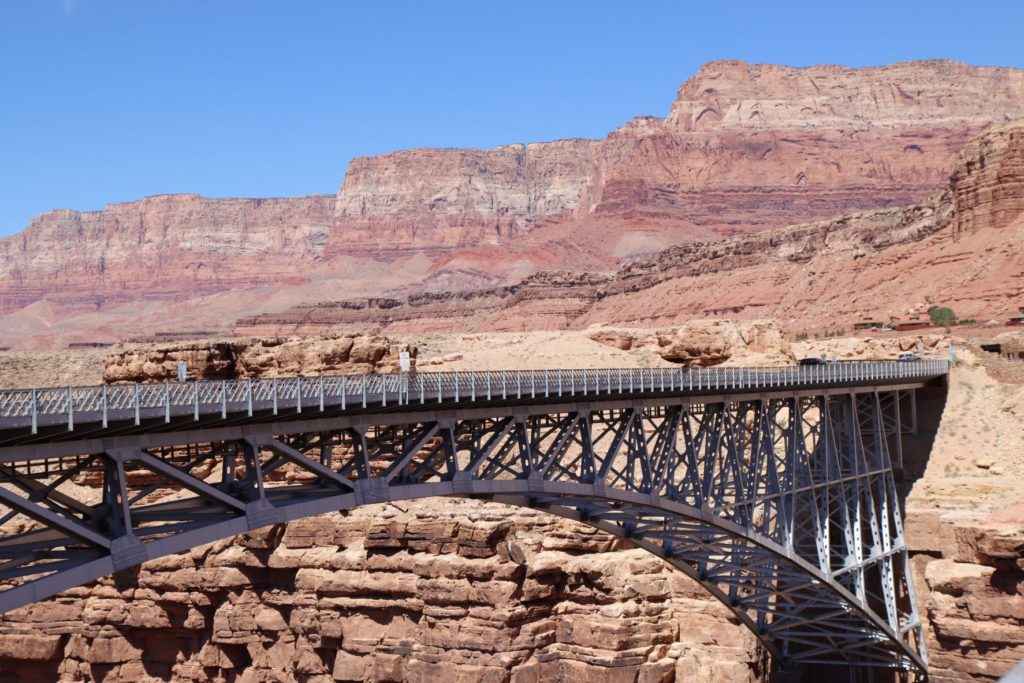
Are you looking for a quick (and really fun) road trip stop near Page Arizona? Check out the Historic Navajo Bridge and its fantastic, yet critically endangered, California Condors!
Our family really loved visiting this site and seeing these incredible birds fly. They are Huge! And for us, this was a perfect stop on the way to the North Rim of Grand Canyon from Page, Arizona.
Where is the Navajo Bridge Located?
The Navajo Bridge is located 39 miles southwest from Page, AZ and it takes about 40 minutes to get there. But be aware that after about 25 miles of driving south, when you reach Bitter Springs, the road will make almost a complete 180 degree turn and you will start driving north again for the remainder of your journey.
I mention this because when it happened to us, and all of the sudden we were heading north again, I kind of freaked out, thinking we were going the wrong way. So hopefully this little heads up can save you (or your navigator) from having a mini-panic attack while driving to the Navajo Bridge.
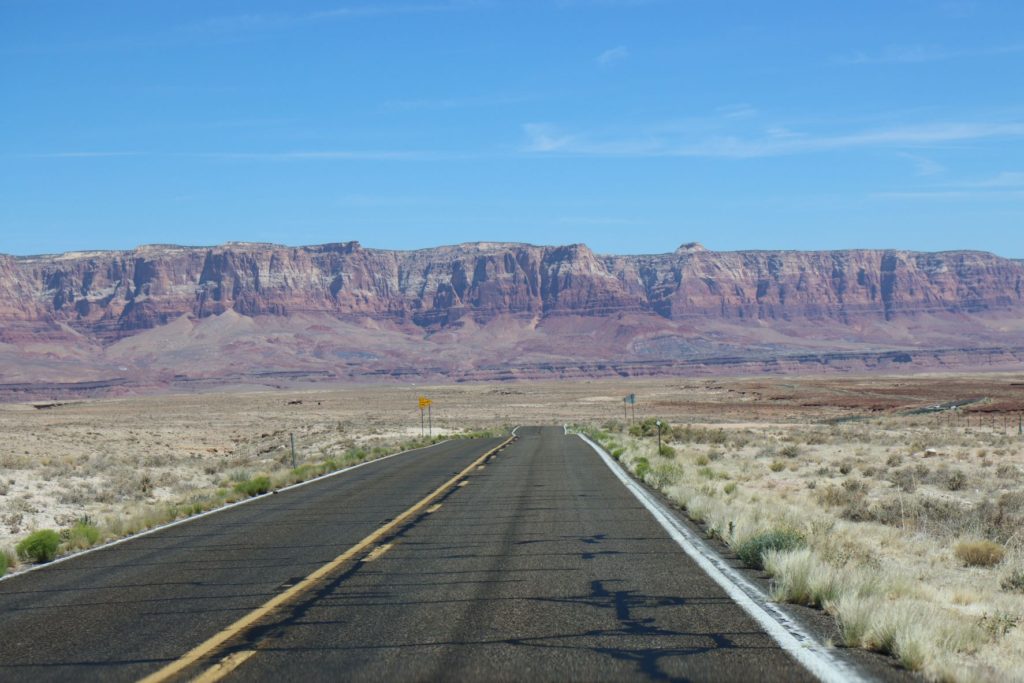
Vermilion Cliffs National Monument
The drive from Page, AZ to the Historic Navajo Bridge is an absolutely gorgeous drive. Here, the road follows along the east side of the stunning Vermilion Cliffs. These spectacular cliffs were formed during the Jurassic Period (165 to 200 million years ago) and they look completely unreal! It’s like someone simply painted this gorgeous landscape that lies in front of you and that your car is now going to drive into this painting. This drive is incredible!
So for me at least, this 40 minute drive went by pretty fast because I couldn’t take my eyes off of how beautiful the Vermilion Cliffs were.

The Historic Navajo Bridge
If you are driving from Page, AZ to the North Rim of Grand Canyon, you will ultimately drive over the Historic Navajo Bridge, so you might as well stop for a moment here and check it out.
What is so important about the Navajo Bridge?
First, there are actually two bridges at this location, the Historic Navajo Bridge and a new Navajo Bridge. And they represent only one of seven land crossings of the Colorado River for 750 miles!
The Historic Navajo Bridge
The Historic Navajo Bridge was built in 1927/28. Prior to this, a ferry system, called Lee’s Ferry, was used to transport people here across the Colorado River. But in the 1920s, there became a need to safely transfer automobiles across this river and thus the need for a bridge to be built arose.
Building the Navajo Bridge was a difficult undertaking, due to the harsh and rugged environment of this remote area. But on January 12, 1929, the bridge was finished and opened to traffic. At this time, it was the highest steel arch bridge in the world!
The Historic Navajo Bridge worked perfectly for the next 66 years. Yet, as cars and trucks became larger, heavier and wider, there arose a need for a new bridge. (The Historic Bridge was only 18 feet wide and only had a 40 ton limit.) This new Navajo Bridge was constructed right next to the Historic Bridge and it opened on May 2, 1995.
How to Visit the Historic Navajo Bridge
Visiting the Historic Navajo Bridge (and the California Condors, don’t worry I’m getting to that) is really easy. When driving south on US-89A, you will see a big pullout on your right, right before you cross on the new Navajo Bridge. Here you will find a decent size parking lot as well as a row of outdoor Navajo shops selling handmade items and other Native American goods.
At the end of this parking lot, toward the river, you will find that you can walk across the Colorado River on the Historic Navajo Bridge. This itself is a nice experience and it lets you get a great view of the new Navajo Bridge that sits right next to it. But what really made this road trip stop amazing for our family was what we saw sitting under the New Navajo Bridge, and that was a critically endangered California Condor.
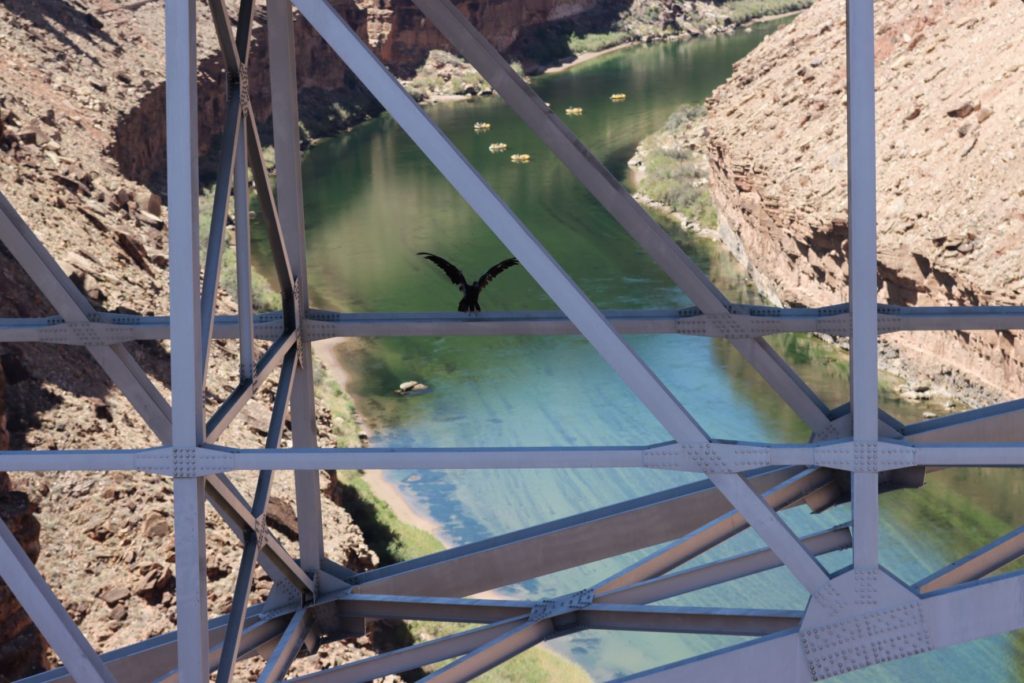
The California Condor
The California Condor is the largest land bird in North America, with a wing span up to 9 1/2 feet and weighs up to 23 pounds! They are also one of the rarest birds in the world. And we saw four California Condors here at the Navajo Bridge!
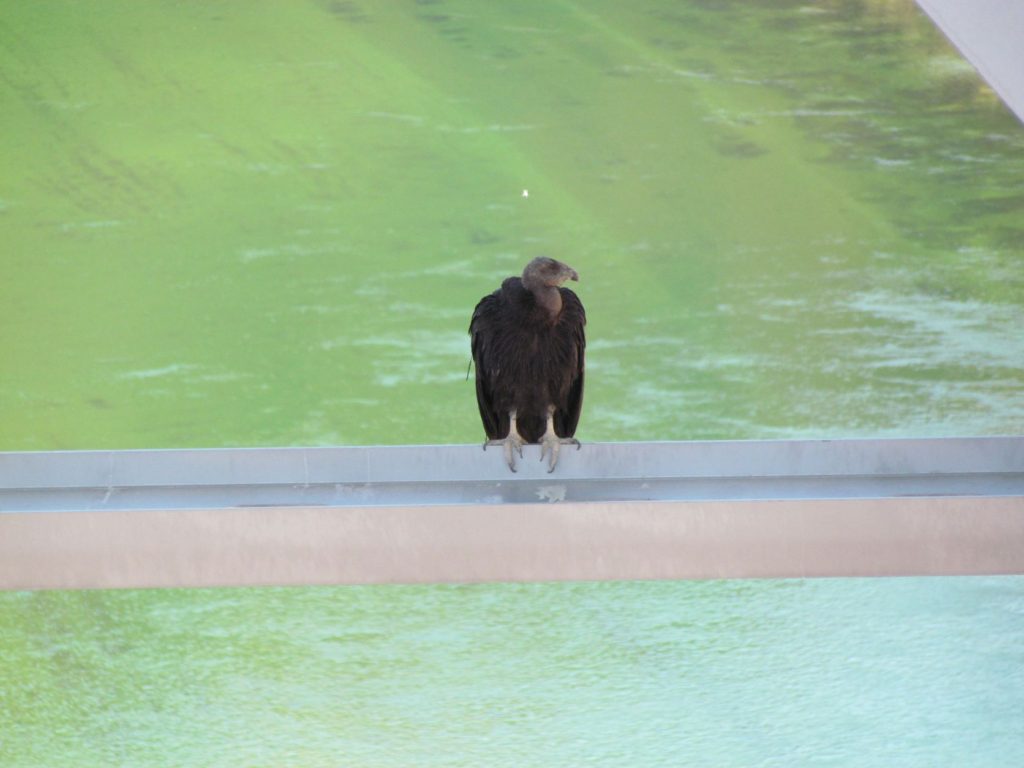
Traveler Tip: Using a camera with a good zoom lens will help you get some great close up shots.
(This picture was actually taken with one of our older cameras. The zoom on it is fantastic!)
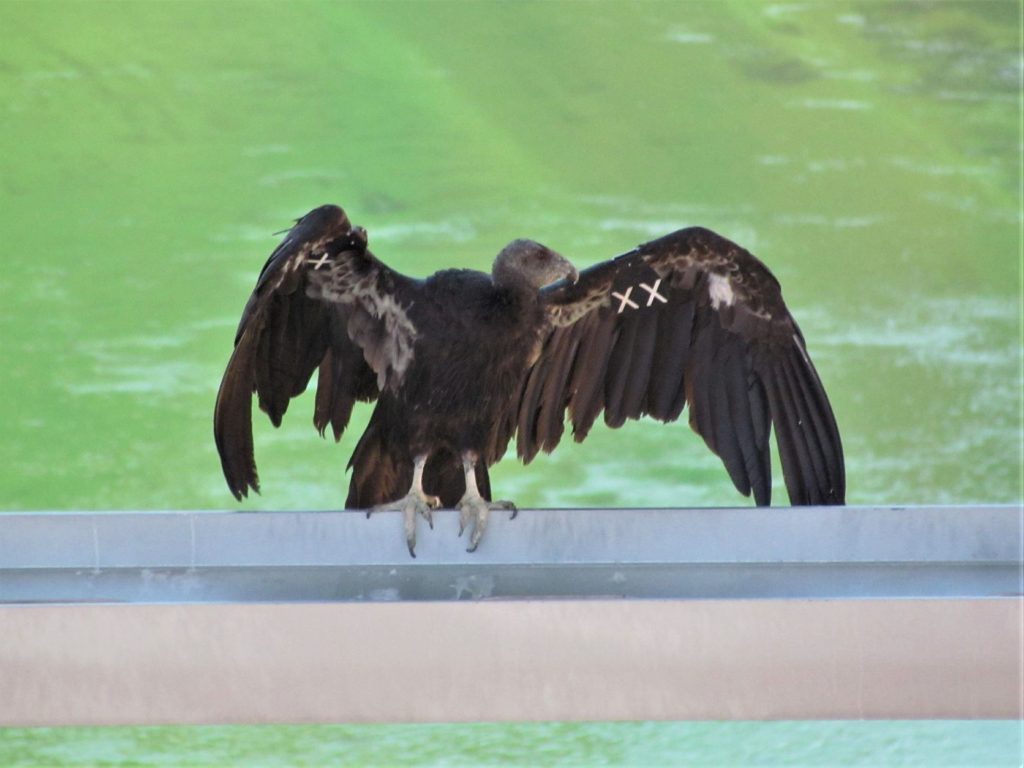
A Brief History of the California Condor
Thousands of years ago, California Condors lived in many places across North America. But by the 1970s, biologists found that there were only a few dozen California Condors left in the wild. Human activity was threatening their survival.
The California Condor survives solely on carrion (dead animals) and due to a loss of habitat, contamination of lead fragments in carcasses, poison bate, environmental pollutants and accidental collisions with power lines/ buildings, this species was struggling to survive. They needed our help.
In 1980 a major conservation effort began to help save the California Condor, but this help came too late to save their decline in the wild. Therefore, in the mid-1980s, all remaining California Condors in the wild (which was only 27 birds!) were captured and taken to zoos to try and save their species.
A Growing Population
From 1987 to 1999, the California Condor population increased from 27 birds to 161 birds. And by 2016, the total population was 446! It was working!
California Condors from this growing population were then reintroduced into the wild. Release sites include the area of Big Sur, Pinnacles National Park and various areas in southern California, as well as Baja California and of course Northern Arizona (at Vermilion Cliffs National Monument, which is right next to where the Navajo Bridge is located!)
As of 2006, the California Condor again began nesting in the wild! And as of 2020 there are now 504 California Condors in the world, with 329 free-flying. Of these free-flying Condors, 103 live in the wild in Arizona/ Utah. And it is some of these rare birds that I hope you are able to see at the Historic Navajo Bridge!
For more information regarding the California Condor, click here.
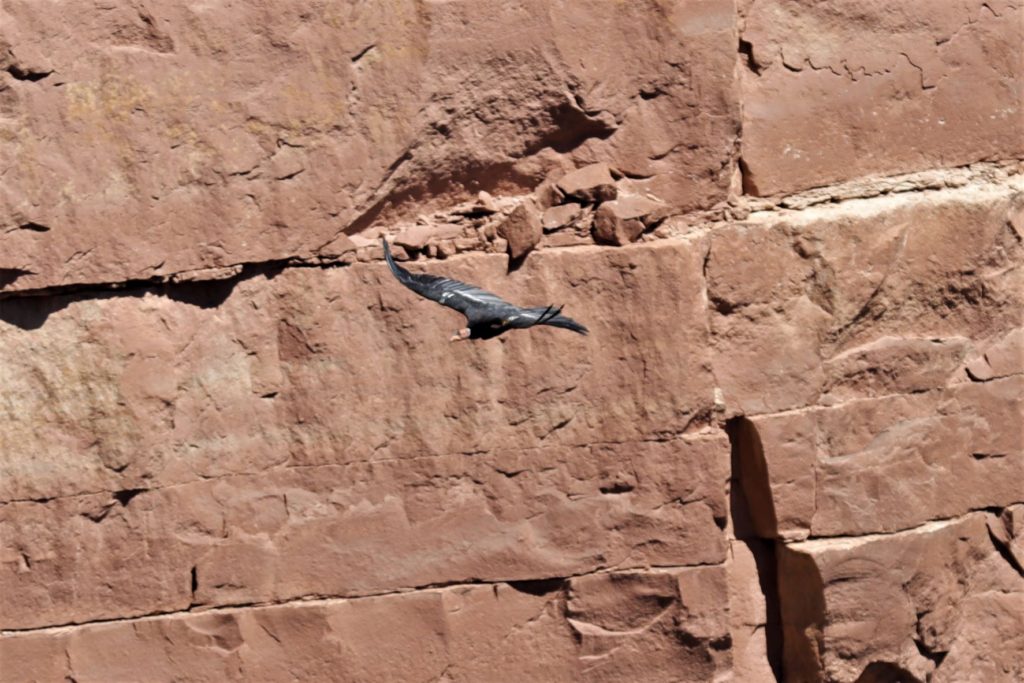
Seeing a California Condor
Seeing the critically endangered California Condor at the Historic Navajo Bridge was an incredible experience for our family. Just watching them glide through the canyon with their enormous wings (all 9 1/2 feet!) spread out was fantastic. (California Condors can glide for hours without beating their wings at all and can reach speeds up to 55 miles per hour.)
Now it is not a guarantee that you’ll see a California Condor at the Navajo Bridge, but with this being near a release area and all of the nearby cliff caves (that California Condors like to nest in), the Historic Navajo Bridge by the Vermilion Cliffs is a perfect spot for them to hang out.
So when you visit, make sure you look carefully under the Navajo Bridge and along the cliff walls for one of these incredible birds. And hopefully you’ll even get to see one fly and stretch out their enormous wings. It’s 9 1/2 feet of spectacular!
If for some reason, there are no California Condors here on the day you visit, do know that there is the “Condor Viewing Site” in the Vermilion Cliffs National Monument about 40 minutes west down 89A. (This is still on the way to North Rim Grand Canyon if that’s where you are headed. If you are heading here, you’ll drive for about 30 minutes on 89A before turning north onto House Rock Road.)
But if your journey just takes you to the Navajo Bridge, know that if nothing else, you’re in for some fantastic scenery.
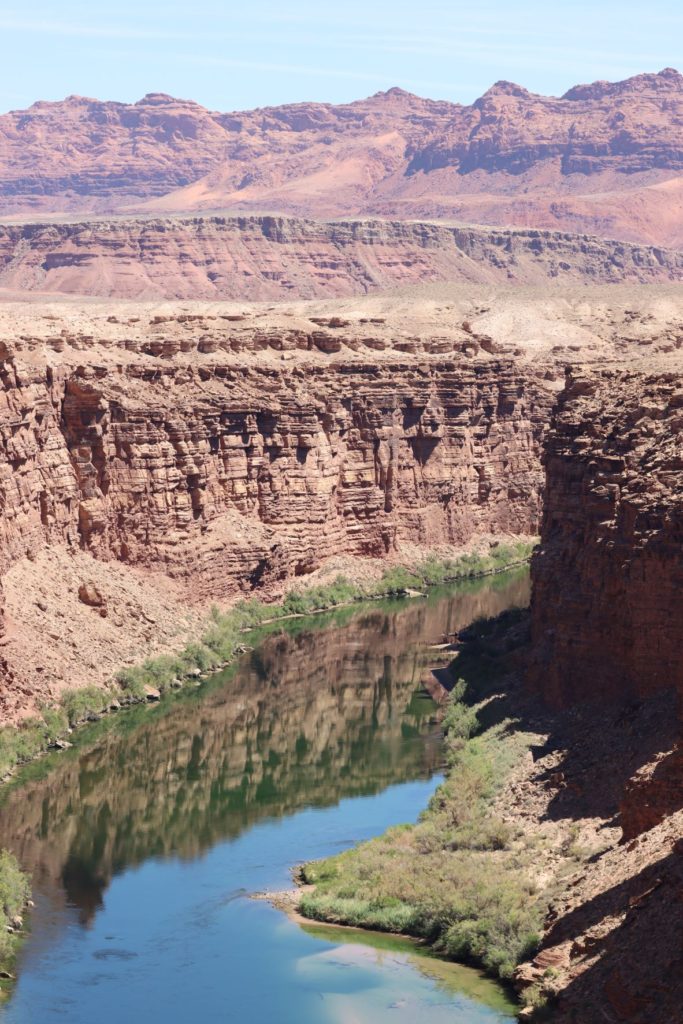
Navajo Bridge Interpretive Center
Once you have finished taking in the gorgeous views from the Historic Navajo Bridge, you can then continue walking to the other side of the bridge where you’ll find another parking lot, the Navajo Bridge Interpretive Center and restrooms. (Our family walked back to our car and then drove to this area on the other side of the bridge. Unfortunately the Navajo Bridge Interpretive Center was not open when we were there. If this is open when you go, I’d love to hear how it is!)
So, now you are all set to visit the Navajo Bridge and hopefully be able to see the rare California Condors that live in this area. I hope that you have a fantastic experience here and enjoy this as much as we did!
Have a Great Visit with Your Traveling Feet!
If You Found This Post Helpful, Please Share / Pin It
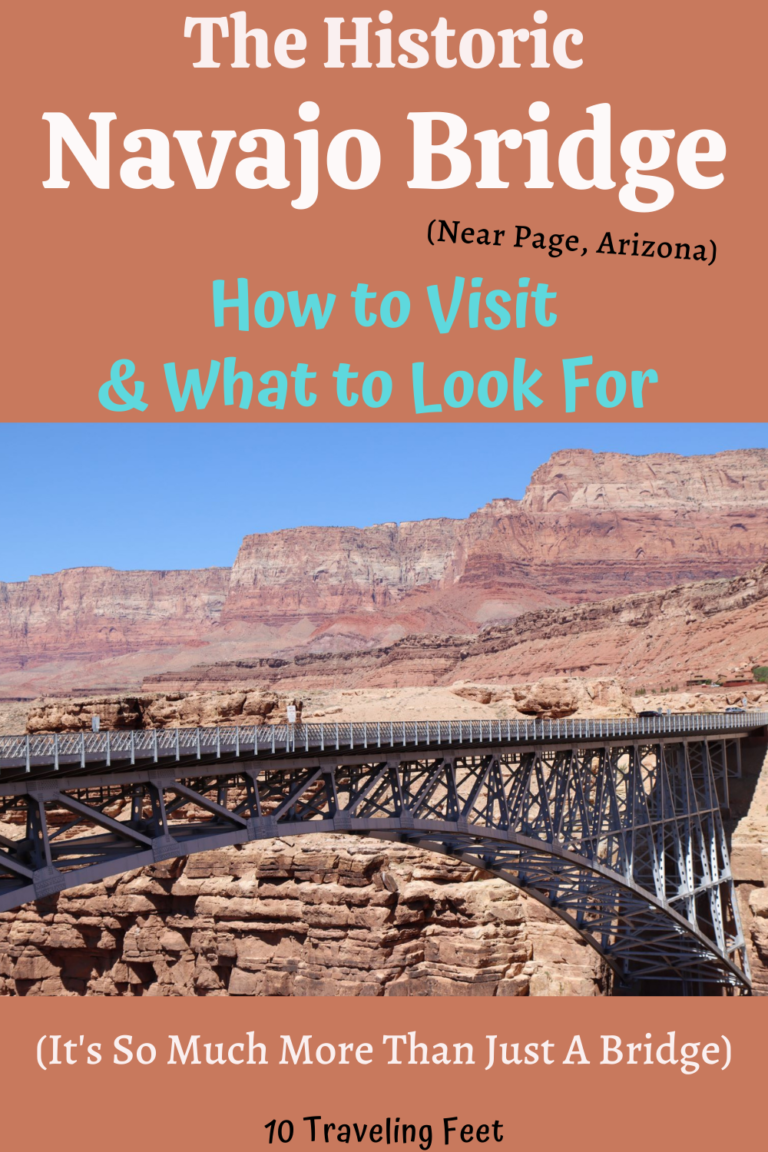
TOP TOURS NEAR THE NAVAJO BRIDGE
You May Also Like:
5 Fantastic Things to Do in SE Utah (near Monument Valley)
25 Top Things to Do in Arizona for Families
5 Amazingly Easy Hikes in Sedona Your Family Shouldn’t Miss!
Our Favorite Travel Tips for Families:
25 Easy Ways to Save Money While Traveling (That Actually Work!)
This post contains affiliate links, which means we may receive a small commission, at no cost to you, if you make a purchase through a link. Please Read Our Disclosure Policy. As always, I only share products with you that I use and love for my family. Thank you for supporting 10 Traveling Feet.
©10 Traveling Feet – 2021. Unauthorized use and/or duplication of this article and/or any of its contents (text, photography, etc) is strictly prohibited.

2 comments
I have lived in Page Az for the last 20 years and am a guide on the Colorado river between Glen canyon dam and Lee’s ferry. I try to be well informed about the area so as to be able to answer any questions our guests may have. This includes the condors and Navajo bridge(s). I just wanted to say your story nailed it. Nicely done. Was happy to come across it.
Hello! Thank you for visiting my site and I’m happy to hear that my post’s story “nailed it.” When we visited the Navajo Bridge near Page, AZ I was absolutely fascinated by the California Condor’s story and I’ve been sharing it with everyone since. They are such an amazing bird and it’s so inspiring to see how their population has grown over the last few years. Again, thanks for reading! Jenny